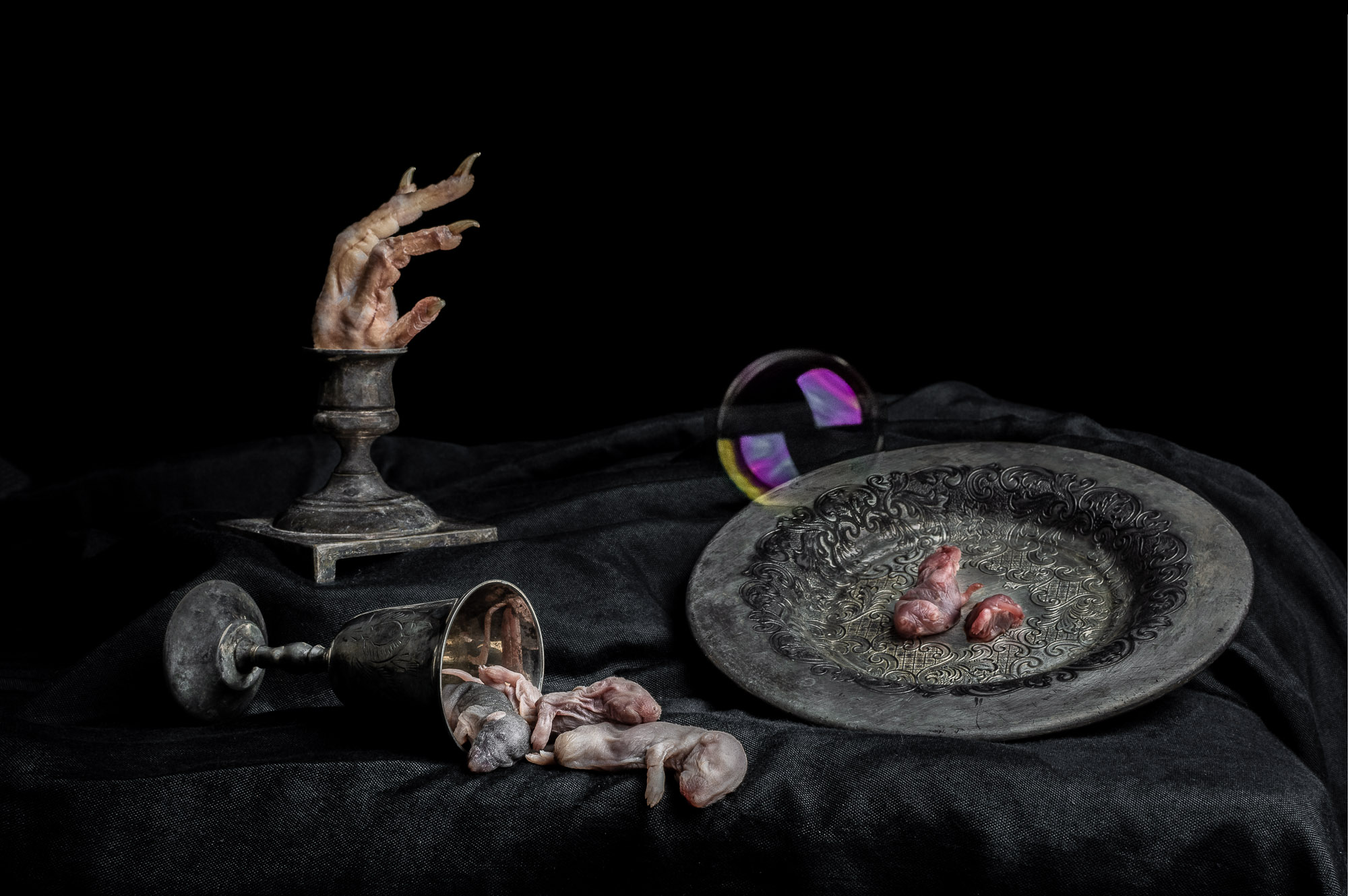Still Life Studies: Soap Bubbles and Decaying Flesh
“Not much music left inside us for life to dance to. Our youth has gone to the ends of the earth to die in the silence of the truth. And where, I ask you, can a man escape to, when he hasn't enough madness left inside him? The truth is an endless death agony. The truth is death.” —Louis-Ferdinand Celine
The first time I came across soap bubbles as a motif in vanitas still life was in the context of a well-known painting by Jacques de Gheyn II. That piece contains all the staple tropes of memento mori art: reminders of transience (human skull, soap bubbles, cut flowers, wisps of smoke) placed alongside reminders of human folly (coins, a medal). I remember being fascinated by de Gheyn’s bubble and the surrealist imagery that he painted reflected within its surface (the leper’s rattle and the torture wheel). After seeing de Gheyn’s work I had long mused on the idea of incorporating soap bubbles into my own works, because they provide a very literal visual depiction of the central ideas of transience that underpins all memento mori art. However, I was a little put off by the challenge of the proposal; I had initially feared that the bubbles wouldn’t mesh well with the visual aesthetic of my work.
Recently, I finally got around to playing with bubbles and the results are this triptych of images. In the end I’m quite happy with the results. On a metaphorical level, of course, the bubbles resonate perfectly with the dead flesh and human remains; both are reminders that the beauty of life is fleeting. On an aesthetic level I think these images work better than I had expected. The bubbles add a welcome splash of colour to the otherwise largely desaturated palette and, from a compositional perspective, they provide interesting new options for filling in negative space.
While I usually prefer to talk about metaphors and meaning in these posts, these bubble still lifes do provide a good opportunity to talk a bit about craft and camera technique. The reason that bubbles are technically challenging to shoot in the context of still life is precisely the same as the reason that they are thematically relevant: the bubbles do not last very long. In my studio work I use continuous lighting rather than speed-lights. This has the advantage of making it easier to adjust the lighting to get things exactly right (because “what you see is what you get” with continuous lights, no need to squint into your camera’s viewfinder after taking the exposure to figure out if things are looking right). The disadvantage of continuous lights is that you end up with somewhat long exposures. Shooting around the sweet spot on a 35mm lens at ISO 100 I will typically end up with shutter speeds as long as 0.1-1 sec. This kind of exposure is way too long to capture soap bubbles, which drift about and pop on a much shorter time scale. I don’t want to open the aperture and sacrifice depth of field, because sharpness is a big part of my aesthetic. So bumping up the ISO is the only option. To freeze the bubbles for this project I needed to push the ISO up to about 4000 which, on my camera, means dealing with a lot more noise than I’d like. So I ultimately opted on doing some composite work for these images. For each image I blended together 2 exposures: one clean shot at ISO 100 that I used for the majority of the arrangement, and another noisy shot at much higher ISO that was used only for the bubbles and their reflections in the silverware. Normally I don’t like using too much noise reduction on high ISO images because noise reduction algorithms generically blur the image (at least in terms of small scale structure). But here because it’s only the teeny tiny bubbles and nothing else that’s coming from the high ISO raw file it meant that I was able to apply noise reduction software in post production rather aggressively without sacrificing any important detail in the final (composited) image.
Anyway… Enough camera technique bullshit. Next time I promise to talk more about death and less about ISO.
Enjoy!


